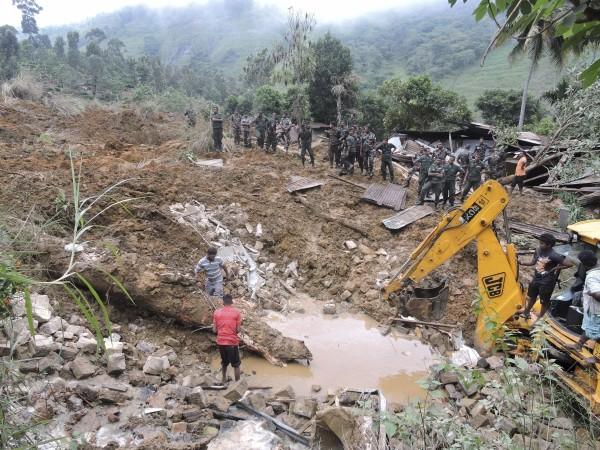
All hopes of finding survivors under the mud and rubble of a landslide in south-central Sri Lanka had run out by first light on Thursday, though a government minister cut the estimated death toll to more than 100 from 300 the previous night.
"I don't think there could be any survivors," Disaster Management Minister Mahinda Amaraweera told Reuters, after visiting the disaster site in the tea-plantation village of Haldummulla, 190 km (120 miles) from the capital, Colombo.
"It is about 100 people who have been buried as there were some children and some estate workers who were not at their houses at the time of the disaster," he added, explaining why the death toll could be lower than feared the day before.
However, the Disaster Management Centre's last estimate for the number killed was still 300.
The centre said 150 houses were buried in Wednesday's landslide, which stretched 3 km (2 miles) and engulfed the village after days of heavy monsoon rains.
Children who left for school before the earthfall returned to find their clay and cement houses had been buried. Nearly 300 people, most of them children, spent the night at a nearby school after warnings of further landslide.
Villagers had been advised in 2005 and 2012 to move away because of the threat of landslides, but many did not heed the warning, Amaraweera said.
There have been a number of landslides since the onset of heavy rains in mid-September resulting in damage to roads, but there had been no casualties until Wednesday.
Some roads in the central districts of Kandy, Nuwara Eliya, and Badulla were blocked due to landslides.
President Mahinda Rajapaksa tweeted that military heavy machinery had been sent to speed up search and rescue operations.
The people living in the affected hilly area are mostly of Indian Tamil origin, descendants of workers brought to Sri Lanka from South India under British rule as cheap labour to work on tea, rubber and coffee plantations.















